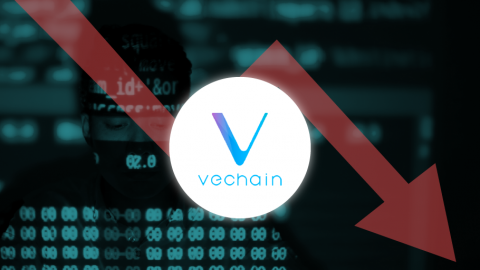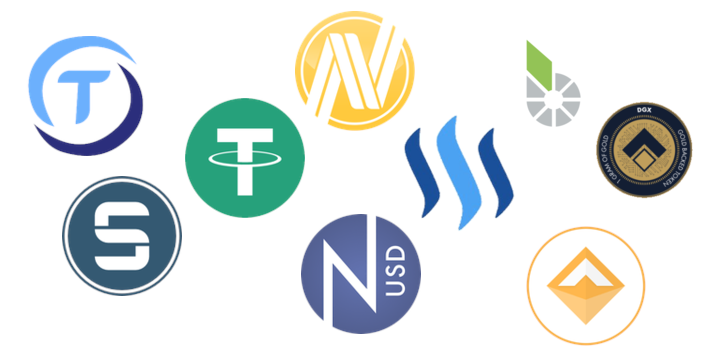
Written by Werner Vermaak
Stablecoins play an absolutely critical role in the cryptocurrency ecosystem. The announcement of Facebook’s Libra project in June 2019 has forever changed the lens through which the world will view stablecoins.
In this article and Part II, we’ll take a look at the past, present, and bright future of stablecoins.
In Part I: Stablecoins 2014-2019, we look at the history, types, purposes, benefits and most popular current examples of stablecoins (All supported by CoolWallet S!)
In Part II: Libra- A Future Under Fire, we dive into Facebook’s fledgling Libra project.
In Part III: Central Bank Digital Currencies (CBDC) of our Stablecoin guide series, we investigate fiat-pegged digital currencies like China’s pending digital yuan.
In Part IV: Big Business Coins, our final chapter, we look at new stablecoins issued by Big Business (JP Morgan, Wells Fargo etc.) and Binance.
Table of Contents
- What are stablecoins?
- Do we need stablecoins?
- The types and requirements of stablecoins
- History of stablecoins
- Overview of stablecoin market
- Use cases for stablecoins
- Most popular current stablecoins
- What are the benefits of stablecoins?
- What are risks of stablecoins?
- Quo Vadis, Libra?
Introduction
If 2017 was the Year of Bitcoin, then 2019 is a shoo-in as the Year of the Stablecoin.
The very name “stablecoin” seems like an oxymoron if you’ve owned crypto for over a year. However, stablecoins are shaping up to be one of the most important pieces in the puzzle to solve the path to mass adoption.
After 18 June 2019, it is impossible to mention the word stablecoin and avoid the elephant in the room, a little project called Libra.
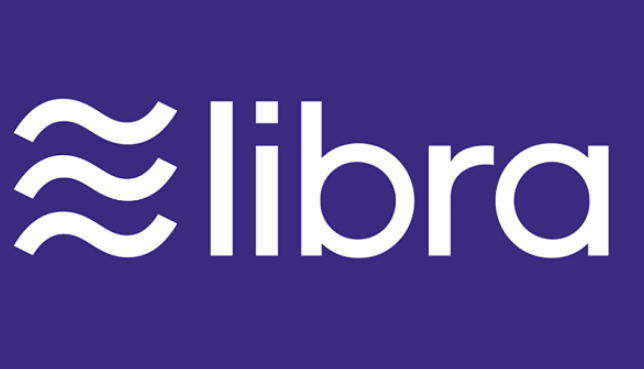
The unveiling on 18 June 2019 of Facebook’s ambitious cryptocurrency was a watershed moment for the digital asset industry. Backed by a consortium of leading tech enterprises like Uber, eBay, Visa and Mastercard, the proposed “globalcoin” for digital payments seems hellbent on dragging the world into the Internet of Money. Judging by the reactions of central banks and lawmakers, kicking and screaming if needed!
We’ll discuss the rise of Libra and its significant ramifications and competitors in Part II of our Stablecoins series.

Prior to Libra, whenever the term “stablecoin” was bandied around, it would almost certainly refer to one of a handful of established cryptocurrencies, i.e. the market-leading Tether Dollar (USDT) or newer entrants like Gemini Dollar (GUSD), TrueUSD (TUSD) or Circle Dollar (USDC).
But what exactly is a stablecoin, how did it start and evolve to this current market with over 200 assets?
1. What is a stablecoin?
A stablecoin is a cryptocurrency that remains stable in value against a pegged external asset class. It aims to minimize price volatility, by keeping its value fixed against that of a traditional real-world asset like a single fiat currency, a combination (basket) of currencies or a valuable real-life commodity. Its primary purpose is to negate the speculative nature of most cryptocurrencies and help create a more consistent and reliable market environment in order to increase adoption of digital assets.
Stablecoins can be pegged against a fiat currency or valuable commodities traded on exchanges (for example gold and other precious metals).
The most prominent stablecoins are pegged against the world’s unofficial global fiat currency, the U.S. Dollar, on a 1:1 ratio.
However, in 2019, with increasing global market instability and unfolding trade wars, new entrants are offering stablecoins that are pegged against a weighted basket of real-world currencies such the Euro, British Pound, Japanese Yen and more.
2. Why do we need stablecoins?
If cryptocurrencies often behave price-wise like little fisherman boats bobbing around on tumultuous seas, then a stablecoin acts like a US battleship, let’s call it the USS Crypto, impervious to the ebbs and flows of blockchain supply and demand and mainly there to maintain peace and order.
Reduced volatility
To illustrate how volatile cryptocurrencies can be, look no further than the first Bitcoin transaction in 2010, when a young programmer bought 2 pizzas for 10,000 BTC, worth less than $30 at the time. It’s now worth $98 million according to the Bitcoin Pizza Index! You can read all about Bitcoin Pizza Day here.
Investors see a fiat-backed virtual currency as an acceptable asset class that will help mitigate the damage caused by huge swings in value from speculative digital assets.
Cross-border payment and remittance solution
Multi-national corporations like JP Morgan and Wells Fargo increasingly view stablecoins as a lucrative new solution to settle cross-border payments. Transacting with digital assets is more efficient, faster, and cheaper than current fiat solutions like SWIFT, which takes days to clear and requires the costly involvement of intermediary financial institutions who all take their cut and subject the parties involved to much red tape.

For example, Filipinos working overseas sent a record $32 billion in remittances home in 2018 through traditional banks. That’s a lot of unnecessary bank charges for what could be an effortless process with stablecoins.
New IMF report explores pro’s and cons of stablecoins
In a September 2019 article on the International Monetary Fund (IMF)’s blog, titled “ The Rise of Stablecoins”, the authors praised the boundless benefits of stable-valued virtual assets as a means of global payments but also criticized its reliance on private entities:

“Stablecoins offer the potential for better integration into our digital lives and are designed by firms that thrive on user-centric design. Large technology firms with enormous global user bases offer a ready-made network over which new payment services can quickly spread.”
“While many stablecoins continue to offer claims on the issuing institution or its underlying assets, and many also offer redemption guarantees at face value, government-backing is absent. Trust must be generated privately by backing coin issuance with safe and liquid assets. “
Trading protection tool
Stablecoins also offer investors and traders a lifeline when markets become volatile. If you frequently trade your digital assets to make a fistful of satoshis more, then it’s preferable to keep your portfolio in an exchange or wallet, as you can flip your Bitcoin into an altcoin like Ethereum and back to BTC within as little as a split second if opportunity beckons.
However, stablecoins also help to protect your position if you are certain the price of Bitcoin or a high-profile crypto asset you own will soon tank, e.g. in response to bad news or a parabolic short-term rise in value.
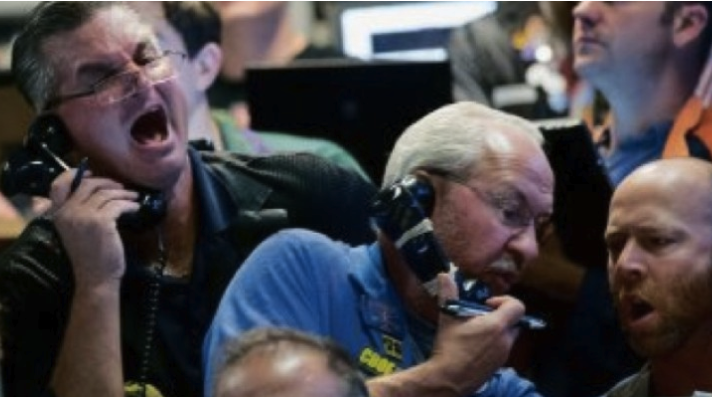
A stablecoin like USDT offers you not only a temporary safe haven asset to preserve the real-world value of your investment, but also the opportunity to increase your Bitcoin holdings by selling and then buying the “dip”. (Please note this does not constitute financial advice. Trading cryptocurrencies is a very risky activity and requires specialist knowledge and skill. Crypto market conditions are incredibly volatile. )
A stablecoin is also especially useful for users that need a more stable and trustworthy virtual currency that will allow them to enter and exit the volatile cryptocurrency market cost-effectively and without the need to convert their assets back to a fiat currency.
3. How are stablecoins different?
What are the 4 different types of stablecoins?
There are 3 main schools of thought when it comes to determining the various types of stablecoins.

1. Collateralized off-chain
This type of stablecoins, the most popular category, are backed by real-world assets that are tightly regulated and frequently verified by external auditors.
A further distinction can be made. They can either be:
- Fiat-collateralized: pegged against real-world currencies like the U.S. Dollar – e.g. Libra, Tether, Gemini Dollar.
- Commodity-collateralized: fixed against real-world commodities like gold, silver and oil, e.g. Digix Gold (DGD)
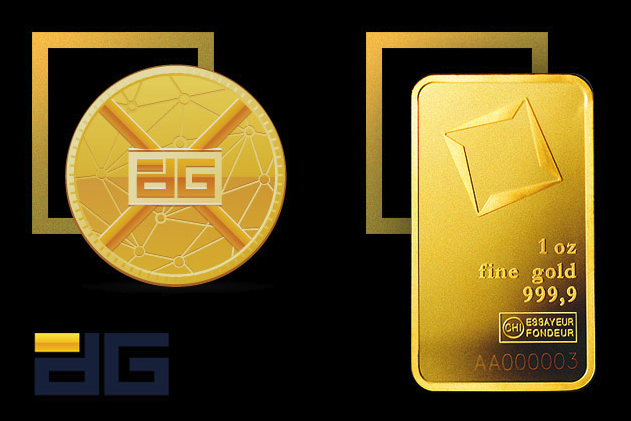
2. Collateralized on-chain
These are stablecoins whose value is backed by other cryptocurrencies, usually Ethereum. The best example and most popular coin is Maker Dao’s DAI token (also discussed further down).
3. Non-collateralized (algorithmic)
These stablecoins are not supported by either real or digital asset collateral and instead, it depends on a complex combination of algorithms and smart contracts to keep a stable price, by buying and selling the stable token and manipulating its supply.
These assets are based on the concept of Seigniorage Shares, first introduced in a paper by Robert Sams in 2014, and were at first lauded for their decentralized and market-driven approach. However, in 2019 they are by and large a failed experiment and have fallen out of favor with the crypto-investor community. Why? Look no further than the now-defunct Basis and the NuBits horror story (further down in the History of Stablecoins section).
How are stablecoins similar?
While every stablecoin has a unique design and structure, they share some similarities. They almost always:
- are backed by some kind of security
- control the supply of their coins in circulation
- endeavor that their value stays fixed to their representative real-world asset
How are stablecoins different from other cryptocurrencies?
A stablecoin like Tether can seem quite boring when compared to a firecracker cryptocurrency like Bitcoin which could shed or add 50% in value in a matter of hours when it’s going.
- Unlike other cryptocurrencies, stablecoins are non-speculative in nature. In fact, this is their primary aim, to reduce volatility and act as a “safe haven” asset when market conditions turn sour.
- Stablecoins like Libra are also often more centralized in nature, built on permissioned blockchains where the blockchain creator has full control over the selection of its node operators, public data (if any) and allowed participants.
- Stablecoins are usually backed by a real-world asset and their issuers frequently undergo audits to ensure this to build trust.
4. The History of Stablecoins
The first stablecoins were issued in 2014. Both BitUSD and NuBits were collateralized though through other cryptocurrencies instead of fiat assets. Both projects are still in existence today, but are only shadows of their former selves. NuBits have a market cap of just under $1 million at the time of writing.
BitUSD (July 2014)
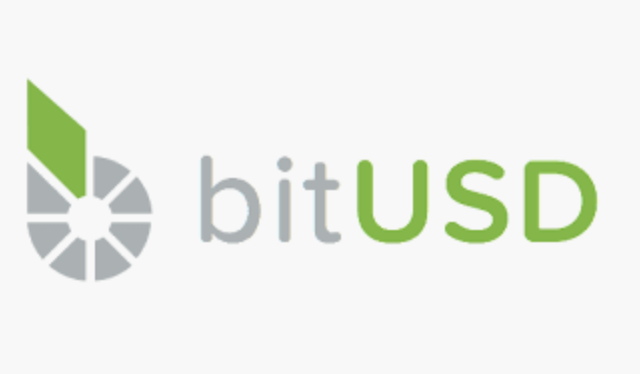
The world’s first stablecoin BitUSD was released on 21 July 2014 and issued as a token on the BitShares blockchain. The pioneering digital asset was the brainchild of two future leading figures in the cryptocurrency industry, Dan Larimer (EOS) and Charles Hoskinson (Cardano).

BitUSD was collateralized by crypto and backed by the BitShares core token BTS, locked in a smart contract to act as collateral. Unfortunately, BitUSD lost its parity to the USD in late 2018 and has come under heavy criticism as a result. It currently floats around only 80c to the dollar.
NuBits (September 2014)
The next stablecoin, NuBits, released in September 2014, was governed by the controversial Seigniorage system (see above), which ultimately caused it to shed 94% of its value.

Since its inception NuBits have had two serious crashes, once in 2016 and again in 2018. However, at the height of the Bitcoin pump, it rose to over $1.20 in value, as a result of panicking investors struggling to offload their Bitcoin into fiat. At present, NuBits trade at a dismal $0.058. That’s right, that’s less than 6 CENTS for an asset supposed to be worth $1!
Tether (USDT) – November 2014
It wasn’t until Tether arrived in 2015 on Bitfinex though that the concept of collateralized off-chain stablecoins, backed by real assets, took off. Issued by the Bitfinex exchange, the USDT cryptocurrency, which was rebranded from the 2014 asset “RealCoin”, is very controversial and remains in the crosshairs of U.S. authorities, due to a $31 million dollar hack in 2017 and price manipulation claims that associated trading at the Bitfinex exchange made up almost 50% of Bitcoin’s insane price increase in late 2017.
Despite this, Tether has played a pivotal role in the rise of cryptocurrencies though (which we discuss further down) and remains the most well-known stable asset currently in the market.
Tether has had a rocky couple of years, dropping to as low as $0.88 and going over $1.05 at one stage , but has now leveled out to a perfect $1.00.

Other stable assets that followed were SteemUSD in 2016 and MakerDAO (Dai) in 2017.
5. The current stablecoin market in 2019
There are currently over 200 stablecoins in the market.
However, only 72 are active at the moment, according to blockchain research company BlockData.
Since 2017 over 200 projects have been announced. The next year is predicted to be the biggest year for stablecoins yet, with several massive projects making their debut. (see Part II of this article)
Source: blockdata.tech
One in two currently active stablecoins are Ethereum-based, with U.S.Dollar-pegged ones the most popular. Tether is the most well-funded, thanks to its record-setting Leo IEO earlier this year.
Source: https://media.consensys.net/the-state-of-stablecoins-2019-40c3eca990f4
Of the 4 types, by far the most popular one is Fiat-collateralized stablecoins, and specifically, ones pegged against the U.S. Dollar.
6. How can stablecoins be used?
Stablecoins are ideal assets where parties require a very low volatility, usually over the short term, in order to reduce the risk of
According to Consensys’s State of Stablecoins 2019 report, these are some common use cases where stablecoins can provide much-needed stability:
- Daily commercial payments between companies in different countries
- Remittances to protect against price fluctuations while payments are being processed,
- Recurring payments such as salaries, wages and rent
- Long-term loans
- Long term store of value and hedging
- Trading and wealth management, that includes the likes of arbitrage
7. Most popular current stablecoins
While much of the current mainstream media attention centers around big-name projects like Facebook’s Libra and JP Morgan’s JPM coin, in reality these stablecoins are either not active yet (Libra) and don’t qualify as truly global stablecoins due to their centralized nature.
JP Morgan’s JPM coin for example runs on a permissioned, centralized blockchain, where the company can control who it accepts as nodes or participants and what data, if any, it shares with the public.
As of the middle September 2019, the following stablecoins are the most popular in the world based on market cap.
And, added bonus, they are all supported on the CoolWallet S!
1. Tether (USDT)
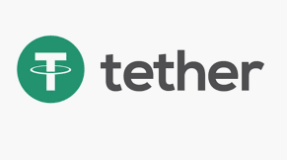
- OMNI & ERC20 tokens
- Natively Supported by CoolWallet S
- Current Market Cap: $4.1 billion
Tether (USDT) is undoubtedly both the most controversial and influential stablecoin to date and considered the “bad boy” of stablecoins. Started in 2015, Tether is currently the 6th biggest cryptocurrency overall, with a market cap of over $4 billion.
As previously mentioned, Tether and its issuer Bitfinex have been beset by allegations in recent years that it is corrupt and manipulated the price of Bitcoin with fake orders during its meteoric rise in 2017 as well as releasing more USDT than it could back with physical assets.
Both Bitfinex and Tether have a seemingly neverending struggle of convincing the market that it indeed holds the real assets to back its market cap (1.8 billion USD at the end of 2018). Many investors also blame them for multiple plunges in the price of BTC whenever rumors of Tether’s demise triggered market crashes.
On 1 March 2019, Tether quietly redefined their claim that each USDT is backed by a real US Dollar to now include assets and interests on loans issued to backing companies.
After being sued by the New York Attorney-General in early 2019 and having $850 million in assets frozen as a result of an investigation into their third-party payment processor Crypto Capital, Tether bounced back spectacularly in May 2019 when Bitfinex raised $1 Billion in 10 days from private and institutional investors through their initial exchange offering (IEO) coin, titled Leo (currently the 14th biggest crypto asset with nearly $1.1 Billion in circulation).
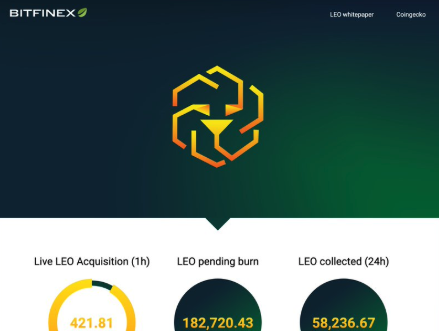
This seemed to allay the industry’s fears and since late August 2019, Tether has unveiled ambitious plans to release both a Chinese Yuan stablecoin, as well as a commodity-based stablecoin backed by a basket pegged to gold, oil and more.
Upcoming cryptocurrencies are also eager to bring USDT onto their blockchains. Justin Sun, CEO of popular new currency Tron (TRX) offered a 20 million “airdrop” a few months back to all users who own USDT on the TRX network
2. USD Coin (USDC)
- ERC20 token
- Natively Supported by CoolWallet S
- Current Market Cap: $400 million
The next biggest stablecoin (26th biggest crypto) currently circulated is USDC, the result of CENTRE, an open-source project funded by Coinbase and Circle. This US Dollar stablecoin runs on Ethereum and is issued by financial institutions that are licensed, regulated and audited monthly to ensure that they keep the corresponding value of their circulated coins in fiat currency on a 1:1 ratio to the U.S. Dollar.
3. Paxos Standard (PAX)
- ERC20 token
- supported by CoolWallet S ( add manually)
- Current Market Cap: $230 million
PAX is a US Dollar stablecoin issued by Paxos, a New York-based startup that has been approved and is regulated by the New York Department of Financial Services (NYDFS)..
4. TrueUSD (TUSD)
- ERC20 Token
- Natively Supported by CoolWallet S
- Current Market Cap: $187 million
Proclaiming itself as the first digital asset fully backed by the U.S. Dollar, TrueUSD is issued by the respected TrustToken platform, known for its regulatory compliance, frequent audits and close ties with traditional banks.
TUSD’s fiat-backed assets are kept in escrow by third parties to ensure that every TrueUSD issued is backed by a real-world asset of equivalent value. TrueUSD came to prominence as a viable alternative to USDT when Tether experienced their abovementioned problems with authorities.
5. Gemini Dollar (GUSD)
- ERC20 token
- Natively supported by CoolWallet S
- Market Cap: $8 million
The Gemini dollar (GUSD) is a stablecoin that operates as an ERC20 token on the Ethereum network. It is considered by many to be the first fully regulated stablecoin and is championed by the well-known Winklevoss twins who maintain that stablecoins solve a big problem as at least 60% of U.S. $100 bills are held overseas.
The Gemini dollar was launched in September 2018 and is issued by Gemini Trust Company LLC, based in New York, who ensures that all GUSD issued and circulated is backed by real USD fiat deposits held in a New York bank and audited monthly by a registered independent accounting firm.
6. Dai Token (DAI)
- ERC20 token
- Natively Supported on CoolWallet S
- Current Market Cap: $86 Million
Launched in December 2017, MakerDao’s DAI stable token is a slightly “eccentric” Ethereum-based, fully decentralized and USD-pegged virtual asset, that utilizes margin trading and smart contracts to retain its value during changing market conditions. While it’s pegged 1:1 against the greenback, it’s not backed by real fiat assets but rather maintains its peg by users who provide an over-collateralization in Ethereum (more than $1 in value) which they can redeem later. Dai is often used for loans and to fund crypto development and projects. In April 2019, Dai experienced some issues and had to increase their “stability fee” to remain close to $1 in value. Despite this, DAI has a hardcore following in the Ethereum community. Read more here about this innovative project.
8. What are the Benefits of Stablecoins?
Stablecoins are extremely enticing as a convenient payment mechanism. They can be used to seamlessly settle payments and remit money worldwide and can be integrated into digital applications that are cross-compatible with other systems, due to their open-source design, which stands in direct contrast with closed-system operations of traditional banks.
10 benefits of stablecoins:
- backed by real-world assets
- can be used to transact globally
- have very low transaction fees
- can be transferred very quickly
- offers protection for traders and investors during market volatility
- can be sent and received by anyone, anywhere, anytime
- are ideal for cross-border payments by central banks and businesses
- can be pegged to almost any asset, e.g. USD, Euro, gold, silver or oil
- can help unbanked businesses to send and receive money
- are easy to understand- they’re non-speculative, reliable assets
With the growing convergence of the Internet of Things, Artificial Intelligence and Augmented Reality applications, well-supported stablecoins, especially those issued by huge consortiums such as the Libra Foundation, can make the process of paying and transferring money to others anywhere in the world as easy as sending a message to a friend on social media. Especially if they’re built into Facebook, Whatsapp and Amazon operations.
To truly understand that potential, just take a look at the influence of WeChat in the daily lives of Chinese residents and how it’s become the “portal for everything”. Now imagine the whole world embracing one or two stablecoins that they utilize for everything.
9. What are the Risks of Stablecoins?
A very recent IMF article cautions against several threats that stablecoins carry for anyone from customers to national governments, and makes an appeal for regulators to maximize benefits and limit negatives by actively steering the innovation of this disruptive new asset class.
- For banks, they face the risk of being replaced as financial intermediaries if investors and companies start to flock to stablecoin issuers. However, banks will surely adapt and of course, stablecoin providers will eventually need to put their clients’ fiat deposits back into the banking ecosystem.
- For businesses, a serious threat is that of monopolistic behavior by tech behemoths like Facebook and Amazon who could use their globally adopted private stablecoins to stifle competition and monetize customer data on a terrifying scale. If you think Facebook’s Cambridge Analytica scandal was bad, watch this space.
- For countries, especially poorer countries with weak currencies, high inflation and corruption, stablecoins offer their citizens the ability to protect their wealth by moving it into a digitized and stable Dollar or Euro format. This exodus of local currency can stunt economic growth, undermine fiscal policy and drive up inflation even further. Look no further than the Venezuela crisis at the moment.
- For authorities, stablecoins could also give criminals a helping hand, specifically facilitating anonymous money laundering and terrorism funding across countries. That is why regulatory bodies like the U.S.’ FinCEN and the G20’s Financial Action Task Force (FATF), both tasked to spearhead Anti-Money-Laundering (AML) and Combating-Funding-of-Terrorism (CFT) efforts, are now making the “Travel Rule” a focal point to ensure both sender and recipients in crypto transactions have been KYC’d and are known by their real-world identities.
- For customers, their assets must be resilient to instability and threats like bank runs. This might require regulators to treat stablecoins like money market funds in order to force issuers to keep enough liquidity and capital banking.
10. Quo Vadis Libra?
The biggest crypto story of the year is undoubtedly Libra, and the media frenzy it has provoked makes it a lock for Newsmaker of the Year.
After receiving a tough grilling in the U.S. Congress, Libra is set for a very tough road ahead before it can even start, with lawmakers in the U.S. calling for it to be banned due to the threat it poses to the U.S. Dollar. Furthermore, in the last few days, both France and Germany have said that they will block the development of Libra in their countries due to the threat it poses to the stability of the Euro.
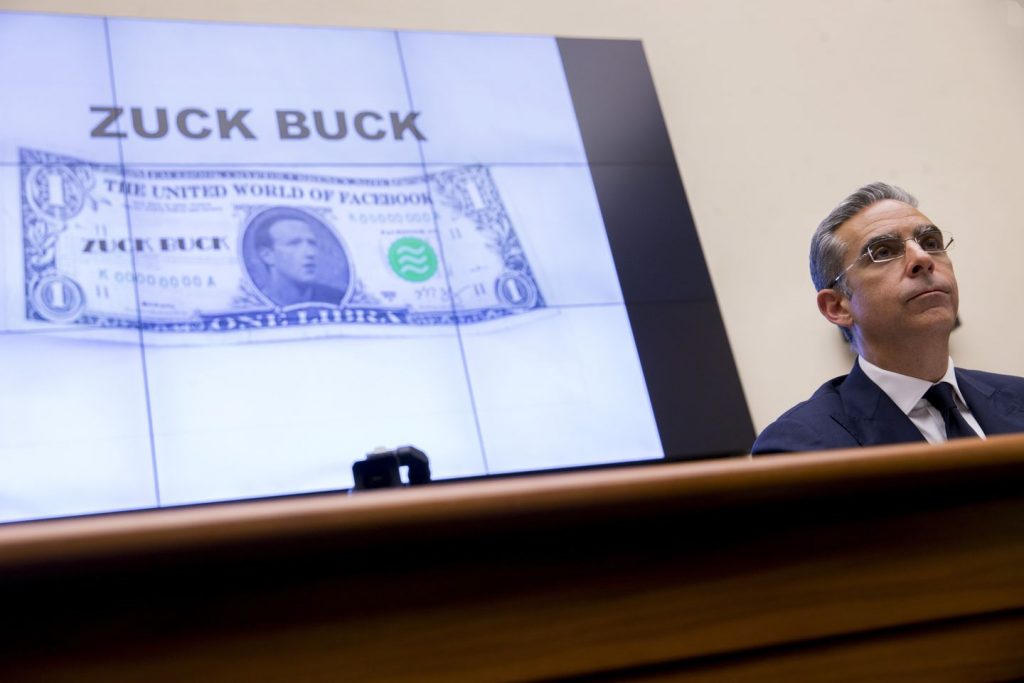
And of course, to add insult to injury, Libra is also a crypto-non-grata in China, where the People’s Bank of China (PBoC)’s most senior officials have made it very clear that they would never support a U.S.-centric global coin and instead, will soon release their own stablecoin for domestic use.
However, even if Libra never sees the light of day, it has drawn attention to the unlimited potential of stablecoins and specifically a “global coin” offer to the world.
If not Libra, or Bitcoin, then one day, someday, a global digital coin will hopefully rise above all and stand on top of the world, boldly connecting all of its inhabitants and “making it rain” across the globe without the interference of evil bankers or tech wizards.
Which global coin? We’ll continue that conversation in Part II.
Disclaimer: CoolBitX does not endorse and is not responsible for or liable for any content, accuracy, quality or other materials on this page. Readers should do their own research before taking any actions.
CoolBitX is not responsible, directly or indirectly, for any damage or loss caused by or in connection with the use of or reliance on any content, goods or services mentioned in this guide.
